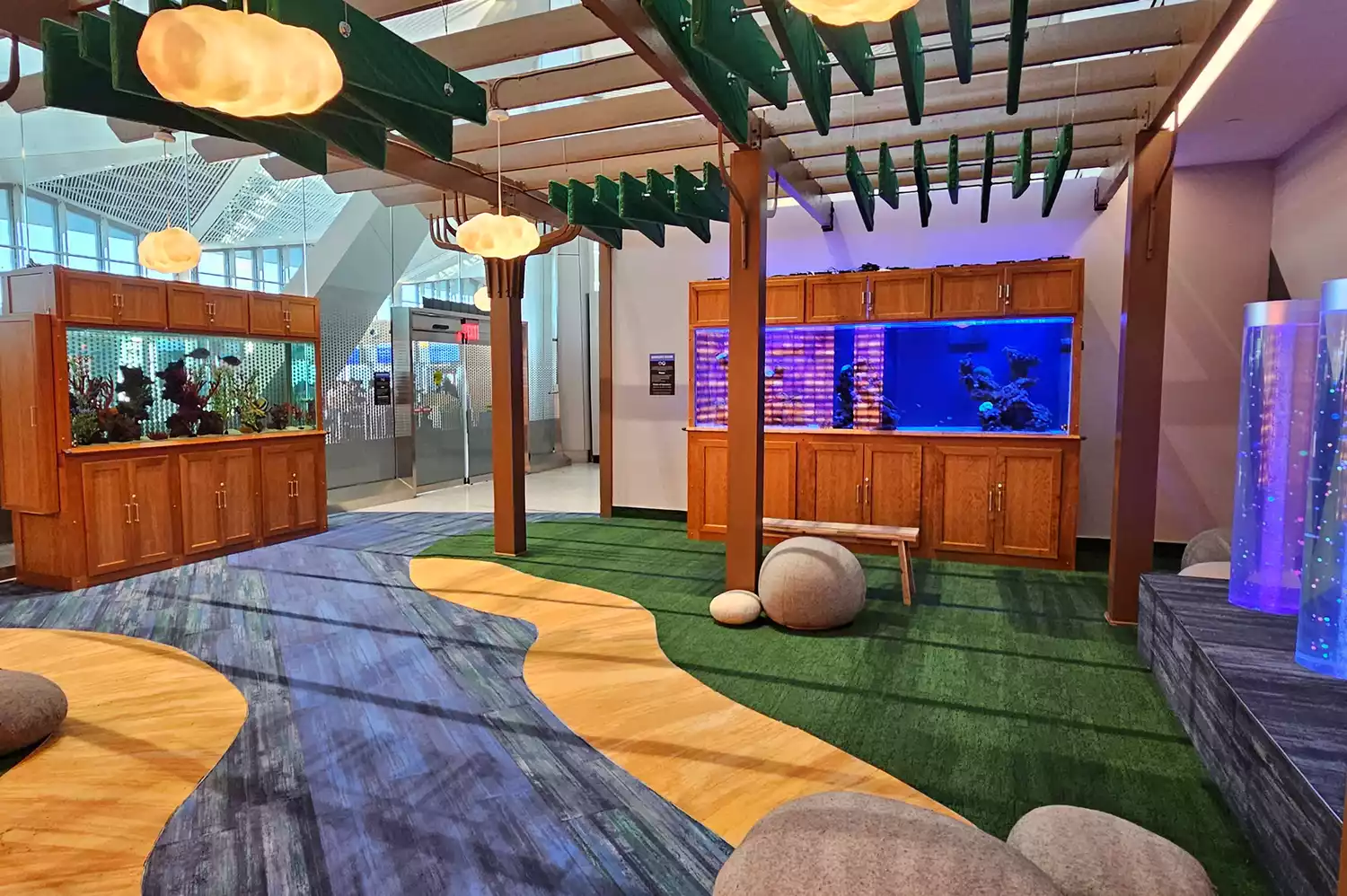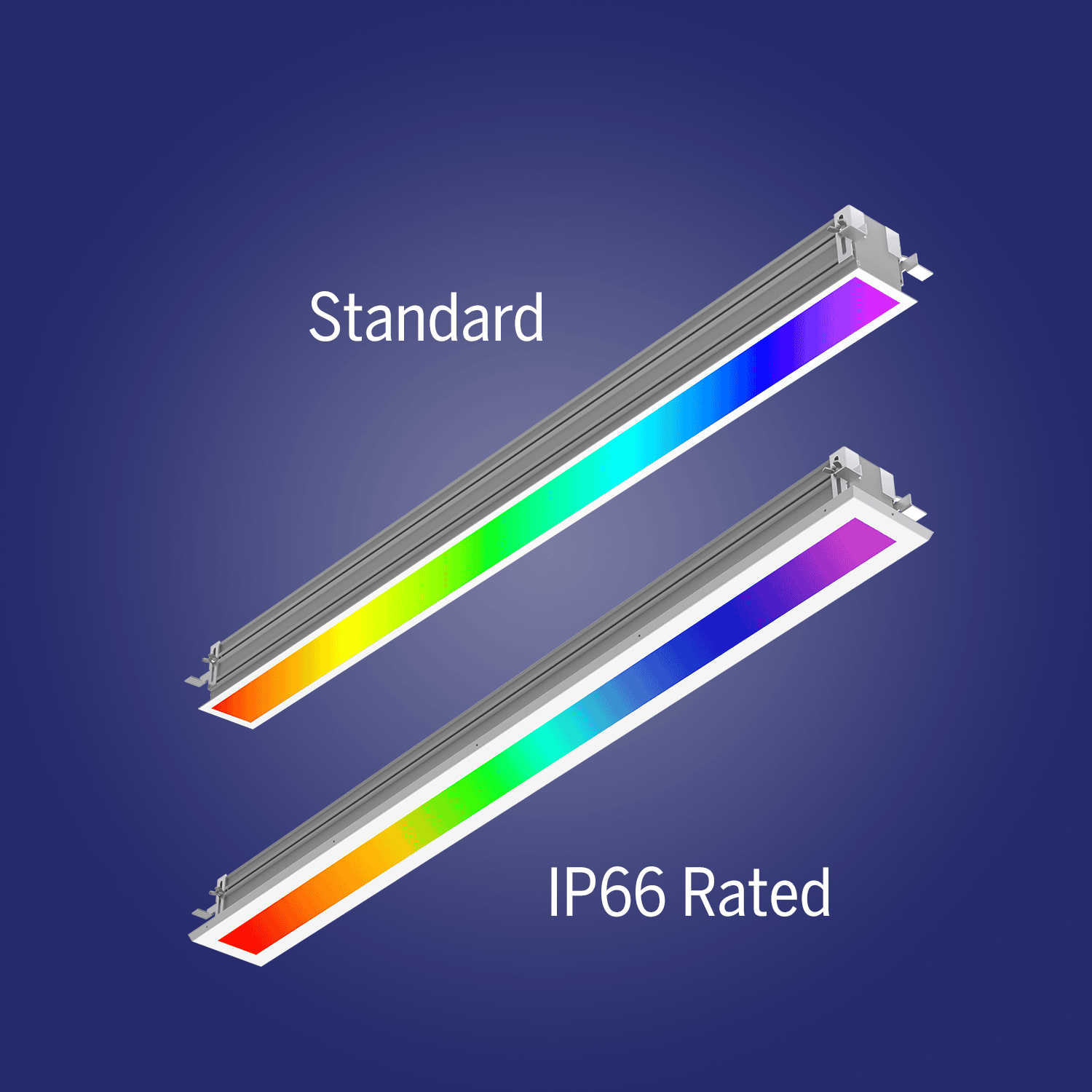Whether in schools, hospitals, airports, or even sports arenas, sensory rooms are designed to support neurodiversity and create a more inclusive experience for everyone.
Why Sensory Rooms Matter
Imagine walking into a space where everything—from the lighting to the textures and sounds—is carefully curated to create comfort and relaxation. Sensory rooms are designed to do just that. They provide a peaceful environment for individuals with autism, ADHD, PTSD, and developmental disabilities, but they’re also a great resource for anyone who simply needs a break from a chaotic or overstimulating world.
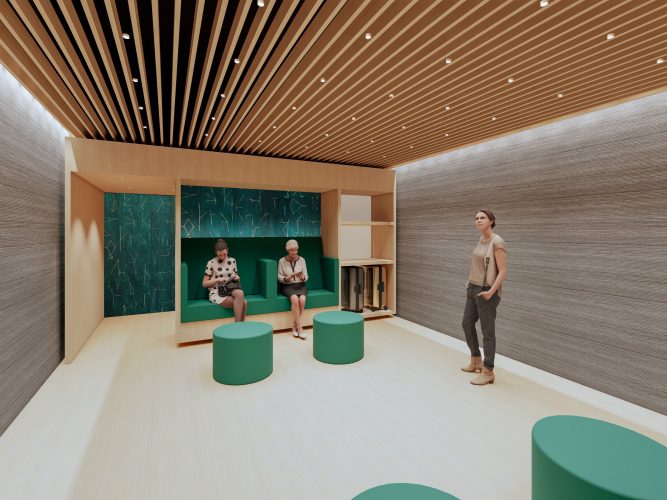
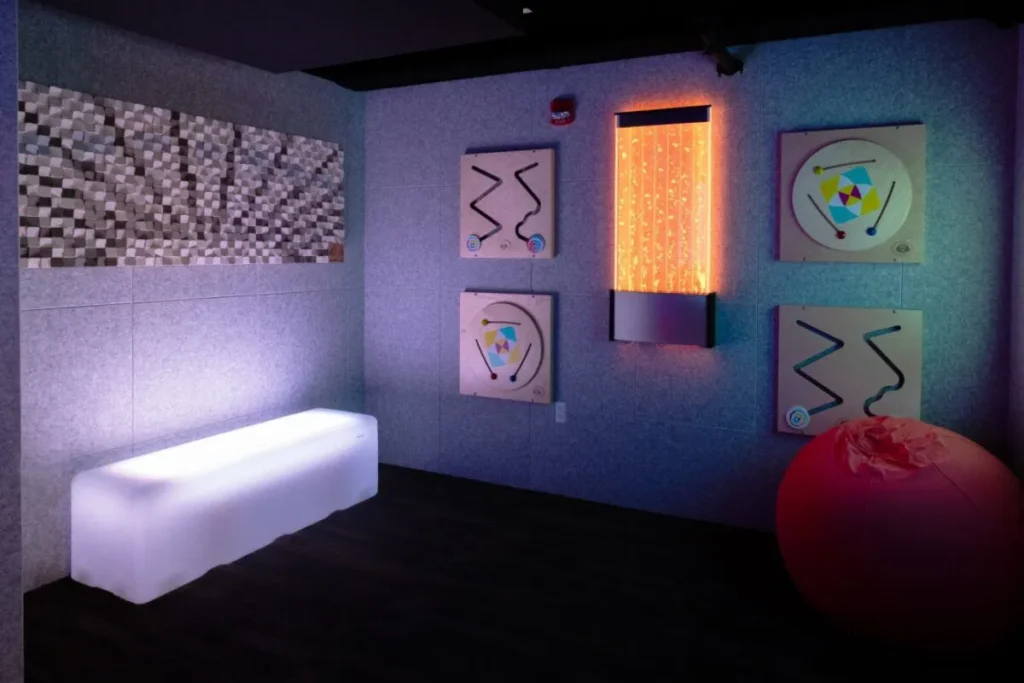
These rooms are popping up everywhere—from schools and universities to hospitals, libraries, and even theme parks. Places like Kansas City International Airport (pictured above left), Newark International Airport (pictured in the header), the Royal Alberta Museum, and Madison Square Garden (pictured above right) have all embraced the idea, recognizing that creating a sensory-friendly space benefits a wide range of people.
Lighting: The Heart of a Sensory Room
One of the most important aspects of a sensory room is lighting. The right lighting can completely transform a space, helping to either calm or gently stimulate the senses. That’s why many sensory rooms rely on flexible, adjustable lighting that can be customized for different needs.
The Power of LED Color-Changing Lighting
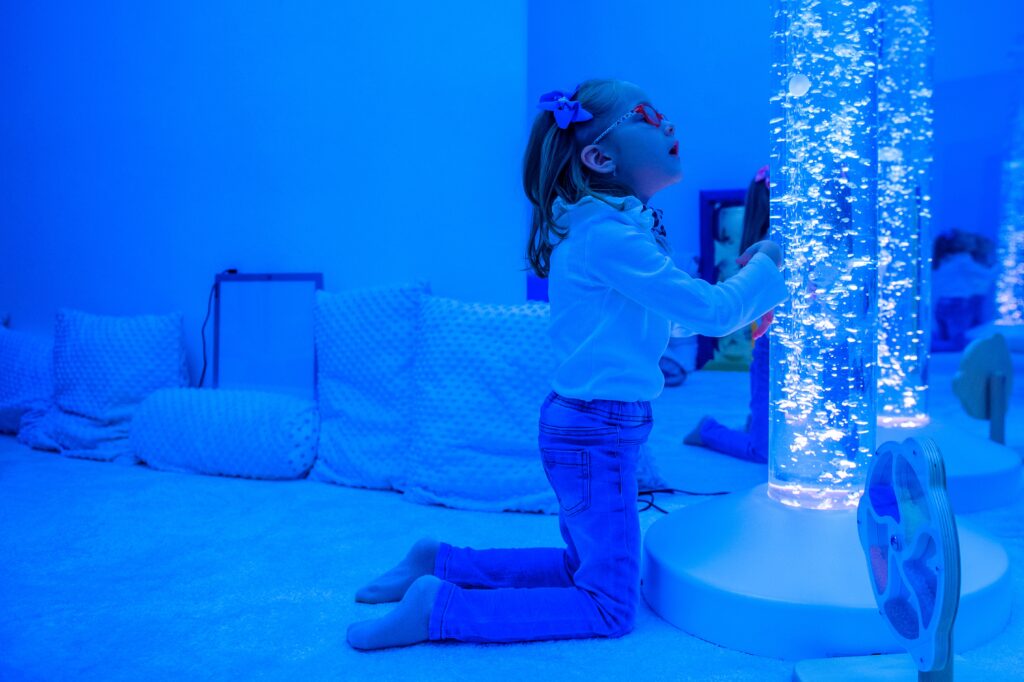
LED color-changing lights are one of the most versatile tools in a sensory room. With the ability to bathe the room in a spectrum of colors, these lights can shift the entire atmosphere within moments. A deep blue wash can create a tranquil, spa-like setting that encourages relaxation, while a soft green glow can reduce feelings of stress and promote focus. Warmer tones, like golden yellows or soft purples, can instill a sense of comfort and emotional security, while a gentle transition between colors can provide a mesmerizing and soothing effect.
For those who experience sensory overload, the ability to control lighting levels and colors is crucial. Dimmable LED lights allow users to adjust brightness according to their needs, preventing harsh lighting that might cause discomfort. In contrast, color-changing sequences can be programmed for dynamic engagement, providing an interactive experience that encourages visual tracking, focus, and cognitive stimulation.
By strategically using LED color-changing lighting, sensory rooms can be transformed into adaptable environments that shift between stimulating and calming settings, depending on the needs of the individual.
Beyond Lighting: What Else Makes a Sensory Room Work?
Of course, lighting is just one piece of the puzzle. A great sensory room is all about engaging multiple senses. Soft textures like bean bags, weighted blankets, and sensory mats help create a cozy atmosphere. Sound plays a big role, too—gentle music, white noise, or nature sounds can block out distractions and create a peaceful setting.
Movement elements, like rocking chairs or swings, are often included to support proprioceptive and vestibular input needs. Interactive features—like cause-and-effect toys, vibration-based elements, or touch panels—help engage users and provide them with a sense of control over their environment.
Tailoring Sensory Rooms to Their Environment
Every sensory room is a little different, depending on its location. In hospitals like Lakeview Hospital (pictured right), these spaces often help patients relax before procedures or recover from stressful experiences. You’ll find dimmable, color-changing lighting, fiber optics, and calming nature sounds in these settings, all designed to create a soothing atmosphere.
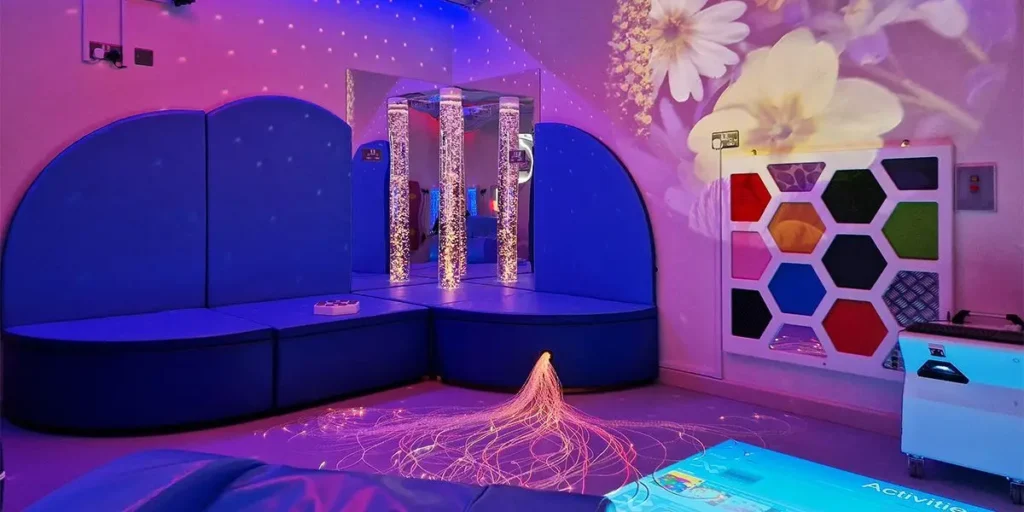
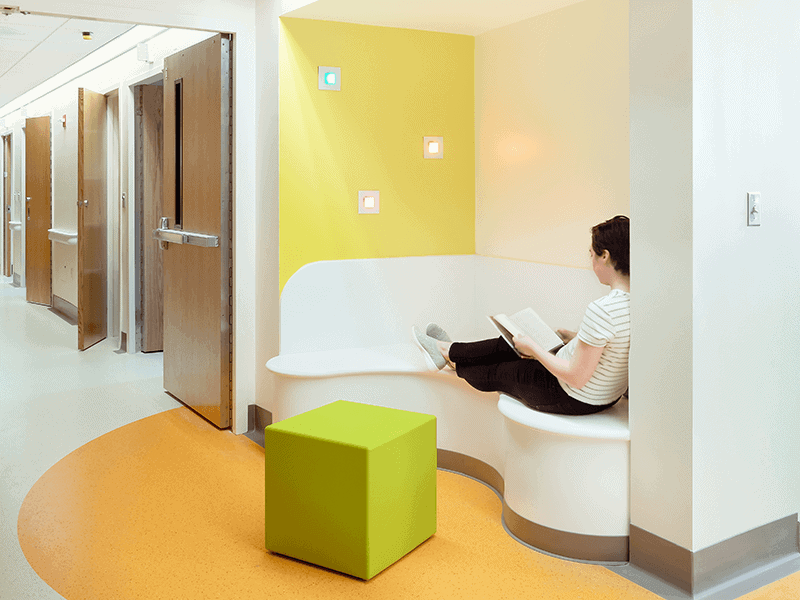
In behavioral health spaces, self-regulation, emotional grounding, and recovery are the main goals of sensory rooms. Incorporating calming tools like soothing music, beanbag chairs, scent boxes, or aquariums can help reduce distress, agitation, and the reliance on seclusion.
In schools, sensory rooms serve a wider range of purposes. Some are used for movement breaks, while others help students with sensory diets or behavioral support. These rooms might be full of interactive equipment, cause-and-effect activities, or even small, quiet nooks where students can decompress.
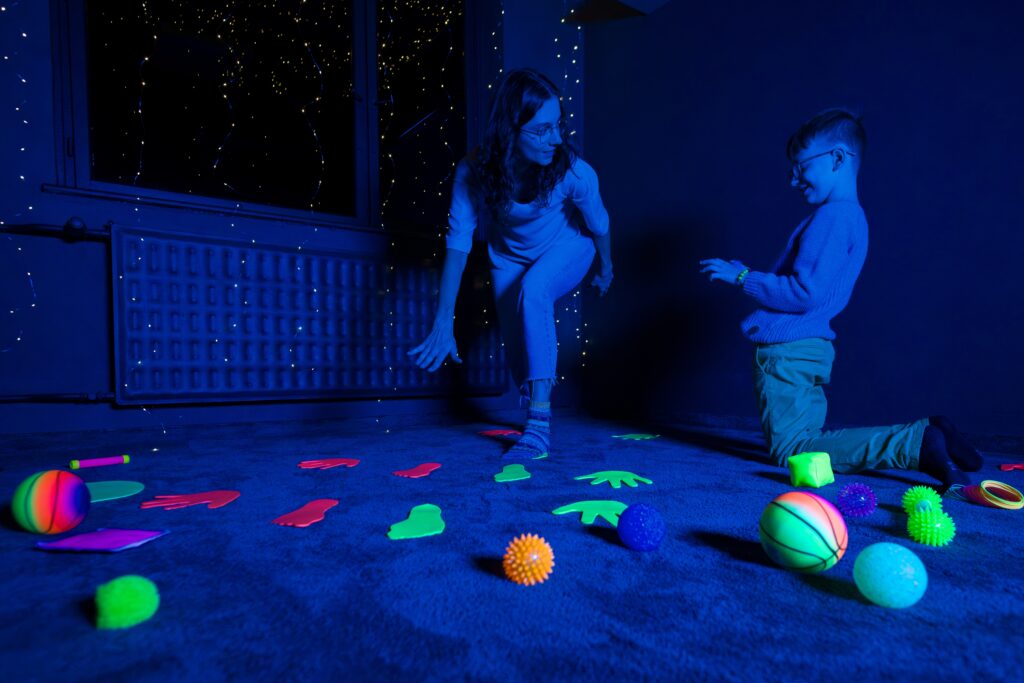
The Growing Demand for Sensory Rooms
As more people recognize the importance of sensory-friendly spaces, we’re seeing them appear in more places than ever before. Whether in a hospital, an airport, or a convention center, these rooms are helping to make public spaces more inclusive and accessible.
And at the core of it all? Thoughtful lighting design. By integrating adaptable lighting, sound control, and a variety of sensory elements, we can create spaces that truly support and comfort those who need them most.
